The Pineapples are tropical evergreen plants with high yield and large nutrient requirements. This sun-loving, exotic fruit can’t escape freezing temperatures and prefers well-drained, slightly acidic soils. Growing Pineapple in soil with good organic matter and high fertility is always beneficial for more production. The Pineapple plant does not require excessive water and fertilizers to grow well. It makes the Pineapple is one of the easiest fruit plants to grow. Let’s check out the best fertilizer for Pineapple plants.
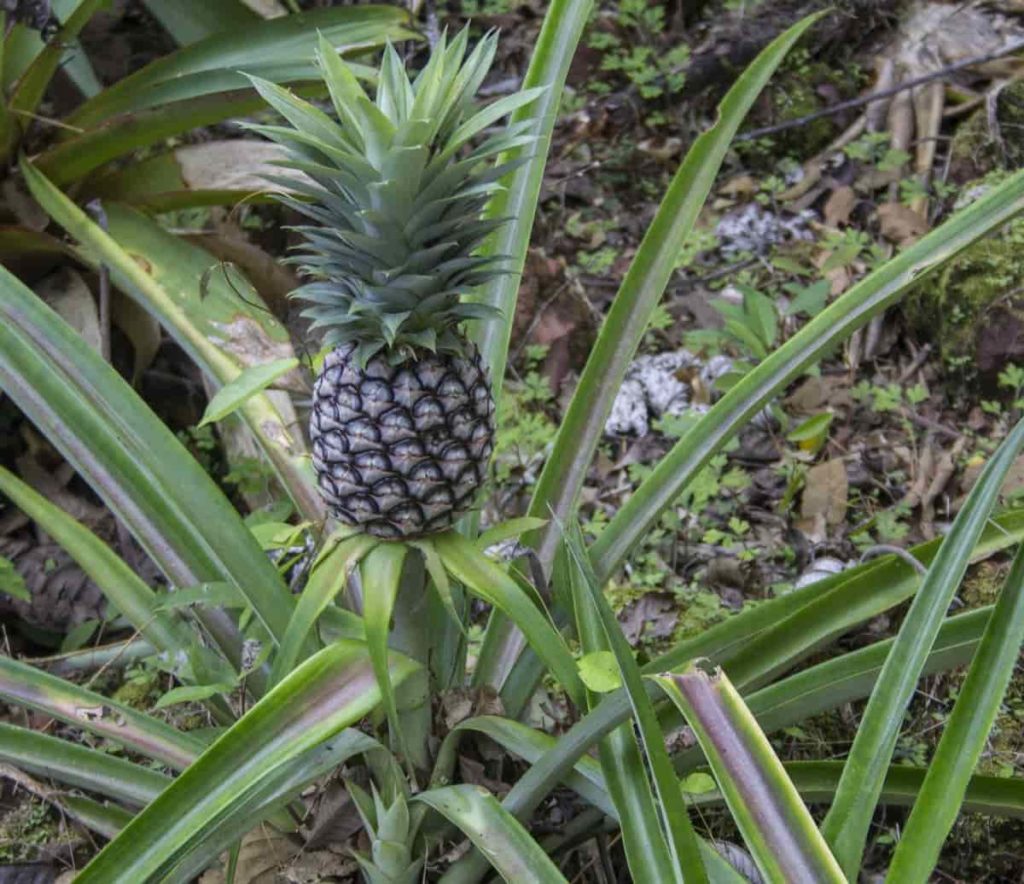
The Pineapple plants tolerate various conditions as long as they get bright sunlight throughout the day and well-drained soil. However, the crop of high-quality sweet fruits requires extra attention on soil nutrients. Regular fertilization and proper plantation preparation can do wonders for the Pineapple plant. Nitrogen is the most widely used nutrient by the Pineapples. Boron is an essential factor for the proper nutrition of the Pineapple, and its deficiency can cause rotten fruit. Magnesium is a necessary nutrient for healthy Pineapple growth.
It helps balance the large amount of potassium required by the Pineapple plant. Nitrogen is an element affecting the quality of fruits and potassium. Phosphorus application is recommended in the first stages of development to contribute to good root development. Although the Pineapple plants are in high demand for nutrients, excessive doses of nitrogen fertilizers cause vigorous growth of the plant, very long peduncles, a lower percentage of flower induction performance, and an increase in the rate of bottled fruits.
On the other hand, if the excess is about nutrients like calcium and magnesium, it brings less efficiency when absorbing potassium, which results in tiny fruits and a decrease in fragrance and taste. In case of a reduction in magnesium intake, it brings problems like fruit like sugar deficiency, acidity, and flavor.
In case you miss this: Pineapple Gardening For Beginners, How To Start
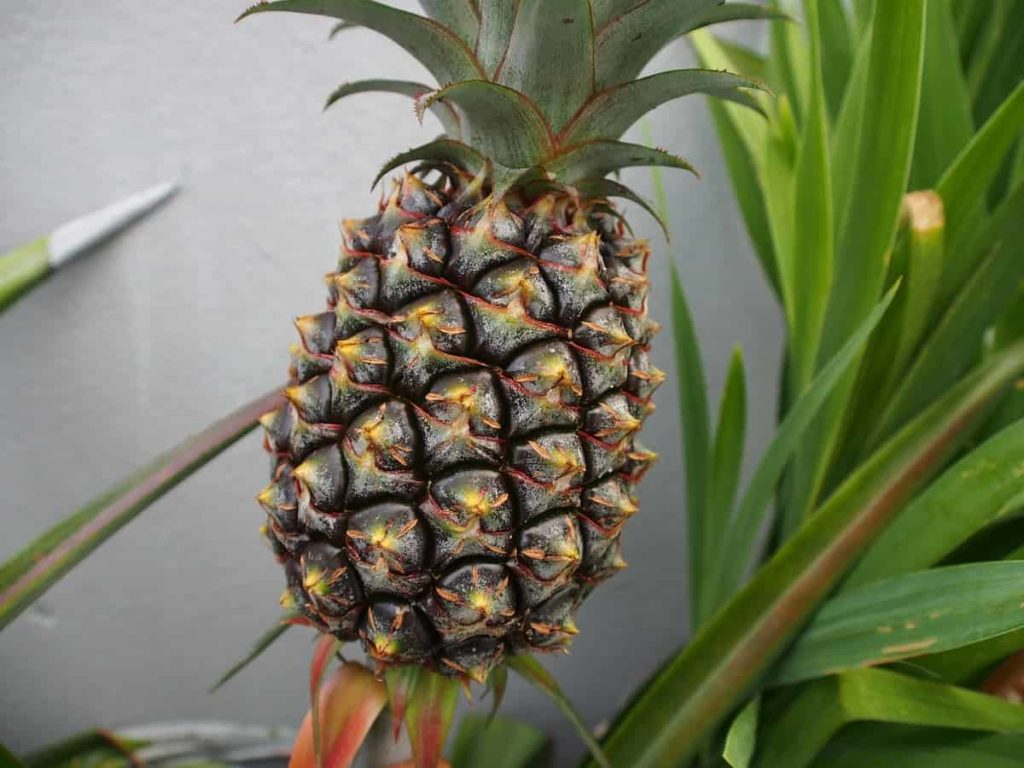
Best fertilizer for Pineapple plants
Homemade fertilizers for Pineapple
Coffee Grounds
Coffee grounds have a high nitrogen level, and Pineapple needs nitrogen. Sprinkle over the coffee grounds and sprinkle a little water on it.
Epsom salt
Sprinkle one teaspoon of Epsom salt near the base of the Pineapple plant during spring and continue to water as usual.
Compost manure for Pineapple
Compost
The Pineapple plants also benefit from fertilizers such as compost, at the time of planting, added to the soil to help develop roots and improve the capacity to maintain water.
Cattle manure
25 tonnes of cattle manure can be applied as a basal dressing for Pineapple. Cattle manure can be broadcast around the plant after removing weeds mixed with soil through the light pulp. You can also sprinkle chicken manure pellets near the base of the Pineapple plant.
Chicken manure
If you use chicken manure, sprinkle it on the soil and the bottom leaves on a Pineapple plant base. The color of the leaves will be a clear sign of feeding or not feeding the plant. If they get reddish/purple, it’s time to feed the Pineapple.
In case you miss this: Growing Hydroponic Pineapples – A Full Guide

Vermicompost
The vermicompost plays a crucial role in producing healthy fruits and thus increases fruit production with better quality parameters.
Organic fertilizers for Pineapple
Outdoor garden Pineapple beds should be well worked and modified with compost, kelp, fish meal, or anything else that is in your hand to enrich the soil.
Liquid fertilizers for Pineapple
You should use fish emulsion or seaweed extract liquid fertilizers. Make a dilute solution and use a watering can to apply on soil and leaves. Stay away from concentrated fertilizers, which can burn the plant.
Natural fertilizers for Pineapple
Mulch can also help keep the soil moist between waterings and prevent weeds from competing with your Pineapple for nutrients. If you use mulch, place it from the plant base to 8 to 12 inches to prevent insects from entering and keep the air circulating properly. After planting, applying thin natural mulch leaves such as wood chips or bark helps improve the upper soil’s nutritional quality.
Commercial fertilizers for Pineapple
The Pineapple plants need two types of fertilizers well balanced and foliar fertilizers which are rich in micronutrients. In addition, soils with a pH value of more than 7.5 require iron supplements to increase the acidity needed to produce healthy Pineapple fruits. Well-balanced fertilizers exist in both liquid and granules. Scatter the granules around the base and scatter the water thoroughly to ensure it goes deeper. For foliar spray, make sure you apply solutions on the soil level and the basis of leaves.
In case you miss this: Growing Pineapple from Cuttings, Tops at Home
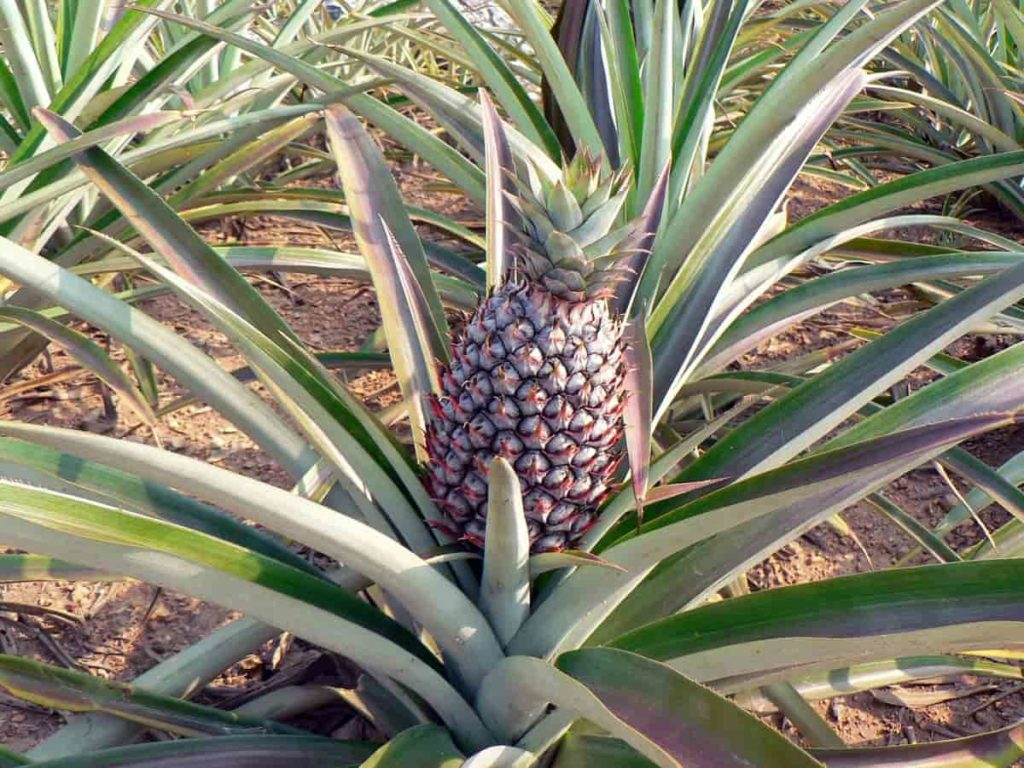
Avoid spraying or pouring manure into the center of the plant as young leaves suffer injury. For the balanced fertilizer application, start by choosing to apply 6-6-6 or 10-10-10 fertilizers depending on which dose selects in six annual applications. For 6-6-6 fertilizer, 56 grams fertilizer for the first two applications,85 grams for 3rd and 4th, and 170 grams for 5th and 6th applications. For 10-10-10 fertilizer, 28 grams of fertilizer for the first two applications, 56 grams for third and fourth, and 85 grams for fifth and sixth applications.
The Pineapple plants can also absorb fertilizer through the foliar spray, sprayed directly onto their leaves. You must follow Foliar spray fertilizer instructions carefully as more sprays can cause leaf burn. Choose fertilizer foliar spray, which contains 6 to 10% nitrogen, 6 to 10% potash, 6 to 10% phosphoric acid, and 4 to 6% magnesium and iron if possible.
When Pineapple plants are grown in limey soil, they suffer. Lime should only be added to acidic soil, which must neutralize. Yellow leaves symbolize chlorosis, which is an iron deficiency in the ground. If this condition occurs, the use of foliar spray with iron can be helpful. The Pineapple plants should not be grown near the lawn as most lawn saplings are not suitable for plants. Lawn sprinklers can give more water to the Pineapple, causing the roots of the plants to rot.
Pineapple fertilizer schedule
The second year of Pineapple plant fertilizer applications also followed the schedule six times in the first year. Iron drenching also follows six applications every other month if needed. In the second year, the fertilizer content increases from 85 to 170 grams of NPK for 12 to 16 months, then reaches 140 to 230 grams for 17 to 24 months. The micronutrient spray procedure should also continue in the second year, with three applications during hot weather.
Young plants of Pineapple should be fertilized every two months or more during the growing season. Suppose the soil has high pH levels, which means it is alkaline. In that case, the occasional drench of the chelated iron soil near the base of each plant can lower the level of soil pH and benefit the plants. Micronutrient foliar sprays are also available and contain zinc and manganese. It would help if you gave these sprays to the Pineapple plants only two or three times a year.
In case you miss this: Gardening Tips for April, Ideas, and Techniques
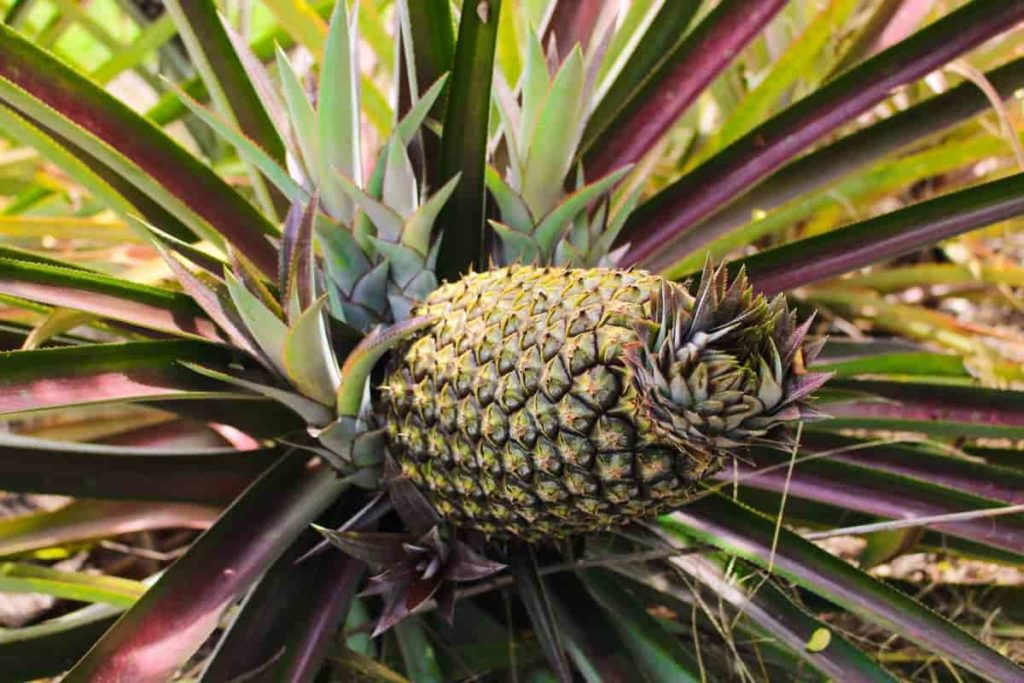
You can apply foliar spray every two to two and a half months. It will help if you use a foliage spray that contains zinc and manganese two or three times a year. If your regular fertilizer doesn’t have iron, use a 1 percent ferrous sulfate solution every eight to ten weeks. In high pH soil, Pineapple will need six-iron applications every year. Pineapples like acidic soil, so it is essential to add iron if the ground is a little alkaline. Only it can be applied when NPK fertilizers are added.
How to fertilize Pineapple in a pot
Container Pineapple can get liquid fertilizer every three months. You can feed every three months if you see no signs of plant reduction. Different types of organic fertilizers provide various nutrients. Artificial soluble fertilizers often have high levels of nitrogen that can be harmful to the growth of proper Pineapple. Compost tea, liquid fish emulsion, liquid-seaweed extract fertilizers dilute it to a consistency of half the power and pour it over the leaves of the Pineapple plant. Do not pour directly into the leaves; it can burn the plant.
Frequently asked questions about fertilizers for Pineapple (FAQ)
Does Miracle-Gro well for the Pineapple?
Miracle-Gro is designed for acid-loving plants such as Hydrangeas, Azaleas, and Rhododendrons. Miracle-Gro is not suitable for Pineapple plants.
In case you miss this: Top 15 Fruits to Grow in Pots
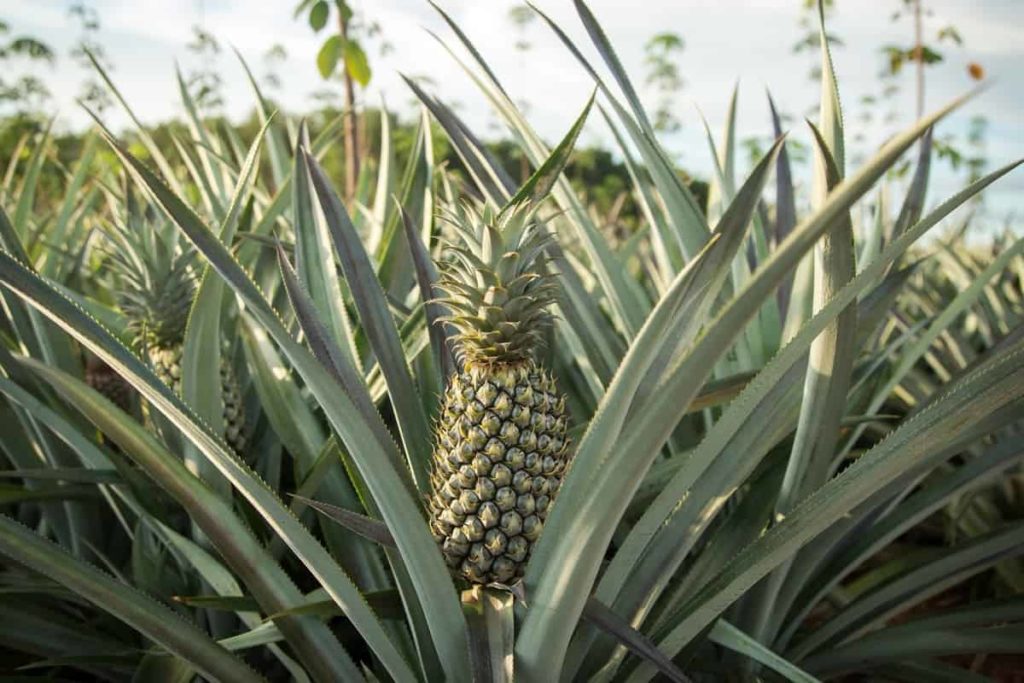
How do you make the giant Pineapple fruit?
Large Pineapple plants usually produce large fruits proportionally. Regular water and light fertilizer applications encourage Pineapples to grow better and reach larger sizes before they begin flowering. Exposure to cold or drought can stop your Pineapple stop growing and beginning flowering.
Why are my Pineapple plant leaves turning yellow?
Too much water or iron deficiency can cause yellow leaves. Unique structures in the leaves of this plant store water for use during drought conditions. In the absence of rain in the growing season, the Pineapple plant needs water every six to seven days.
- Where to Place Indoor Plants in Your Home
- How to Grow Tomatoes Organically at Home: A Comprehensive Guide
- Organic Gardening on a Budget: Low-Cost Methods and Materials
- Gongura Seed Germination and Planting Methods
- Cabbage Seed Germination and Selection
- Broccoli Seed Germination and Selection
- Asparagus Seed Germination and Variety Selection
- Seasonal Flower Gardening: Best Practices for Spring, Summer, Fall, and Winter
- How to Grow Hibiscus from Flower
- Plantation Ideas for Home Decoration: A Beginners Guide
- Flower Garden Designs and Layouts for Beginners
- Planting and Spacing Techniques in Papaya: A Beginner’s Guide
- Growing Gold: Essential Techniques for Planting Pineapples
- How to Make Kalanchoe Plant Bushy: Home Remedies and Solutions
- 11 Reasons Why Your Gardenia is Not Blooming: Home Remedies and Solutions
- Eco Elegance: The Guide to Designing a Drought-Tolerant Landscape
- Gardening on a Slope: Strategies for Hillside Landscaping
- Nourish and Flourish: Top Organic Mulches for Thriving House Plants
- Everything You Want to Know about Indian Mogra Flower: Discover Uses and Growing
- Green Thumb Success: Expert Tips for Cultivating Greenhouse Pumpkins All Year Round
- Maximize Growth & Flavor: The Ultimate Guide to Companion Planting in Herb Gardens
- How to Control Rhododendron Problems Naturally: Home Remedies and Organic Ways to Fix Them
- Natural Magic: The Remarkable Benefits of Cinnamon for Plants
- Best Steps to Revive Dying Tulip with Natural and Organic Treatment
- 10 Reasons Why Your Angel Trumpet is Not Blooming: Remedies and Treatment
- How to Fix Periwinkle Leaf and Flower-Related Problems: Natural Remedies and Solutions
- How to Fix Zinnias Leaf and Flower Problems: Discover Natural and Home Remedies
- Organic Steps to Induce Lemon Tree Flowers: A Comprehensive Guide
- Bloom Booster: Crafting the Perfect Homemade Bougainvillea Fertilizer
- Optimizing Growth: A Guide to Applying NPK Fertilizer for Potted Plants
- 10 Best Homemade Fertilizers for Rubber Plant: DIY Recipes and Application Method
- How to Boost Female Pumpkin Flowers: Effective Steps for More Flowers and High Yields
- Transform Your Indoor Garden: Top Benefits of Pink Salt for Houseplants
- 10 Best Homemade Fertilizers for Peacock Plants (Calathea): Easy DIY Guide
- Unlock Blooms: 9 Reasons Why Your Potted Chrysanthemum is Not Blooming
- 8 Reasons Why Your Potted Hibiscus is Not Blooming: Fix it with Simple Solutions